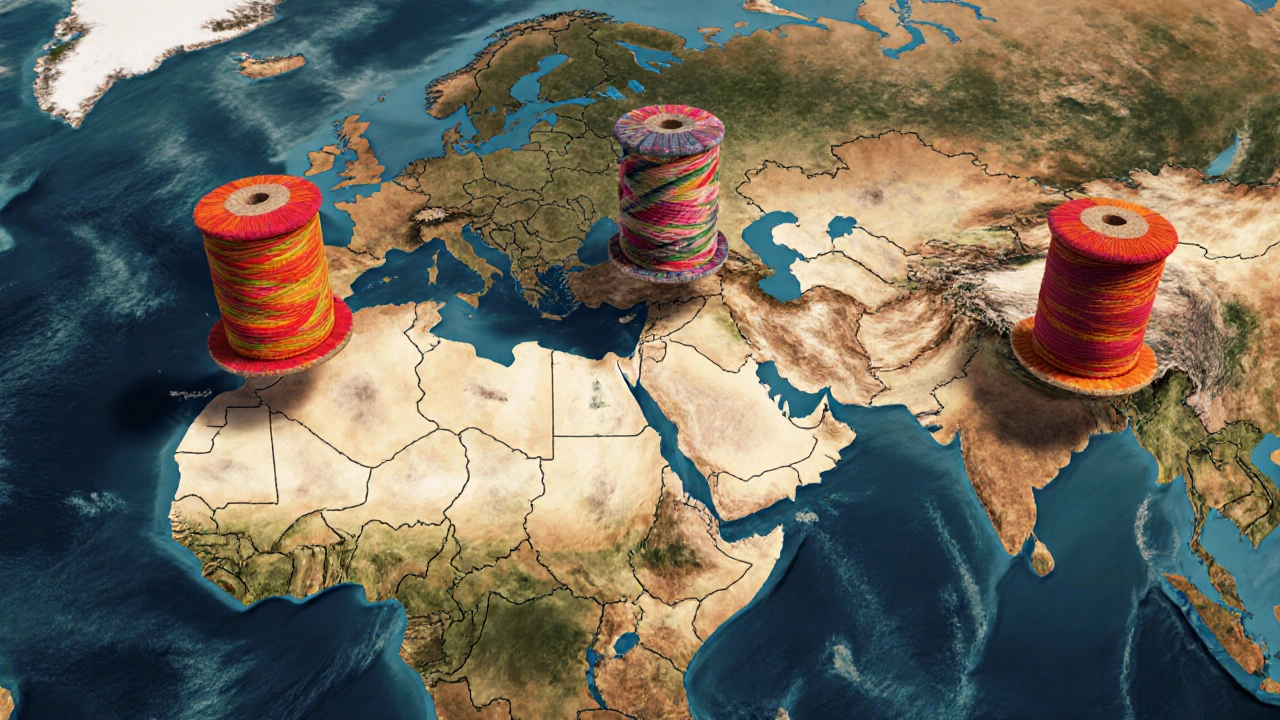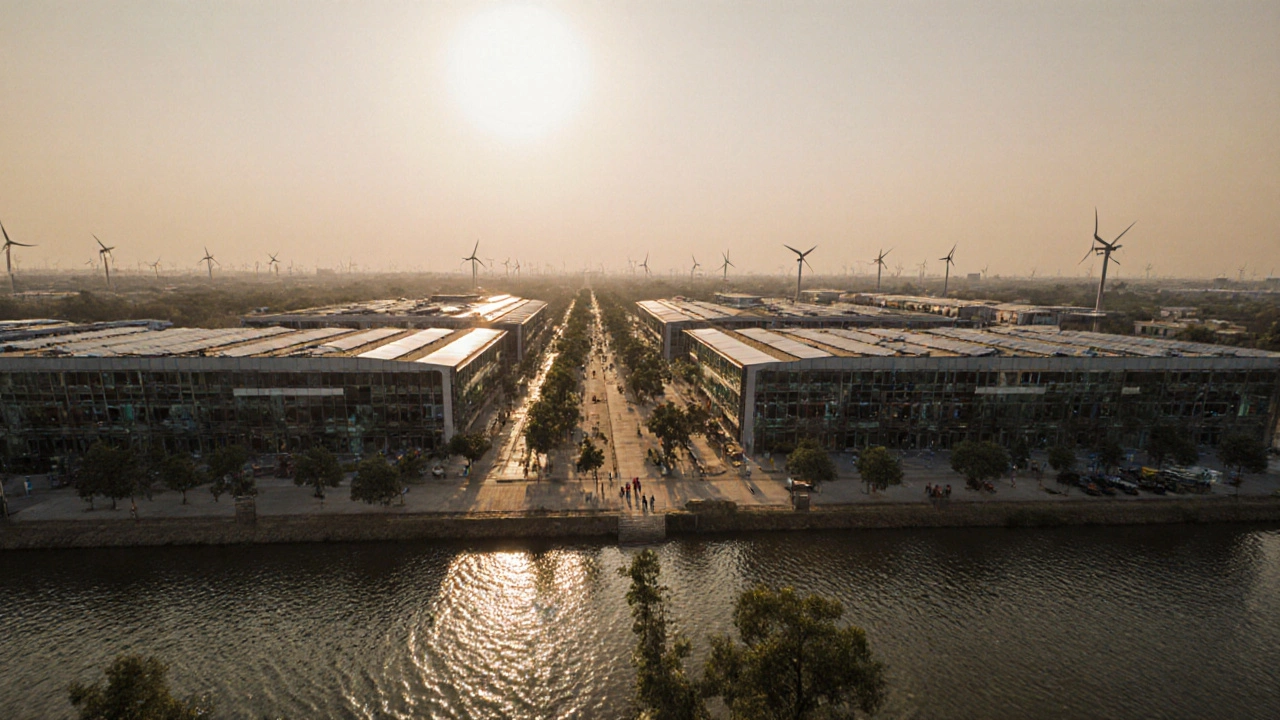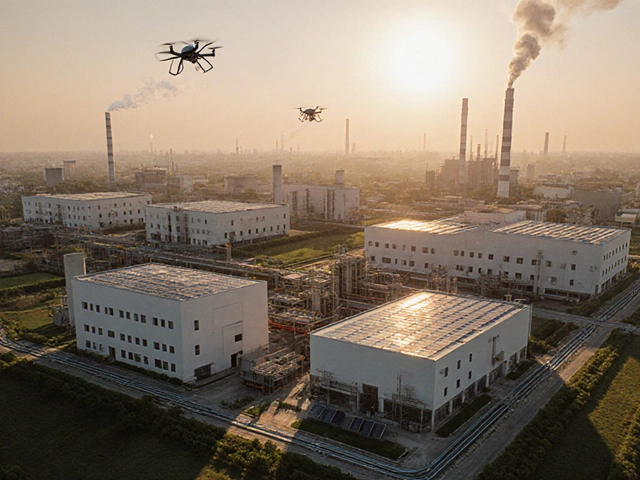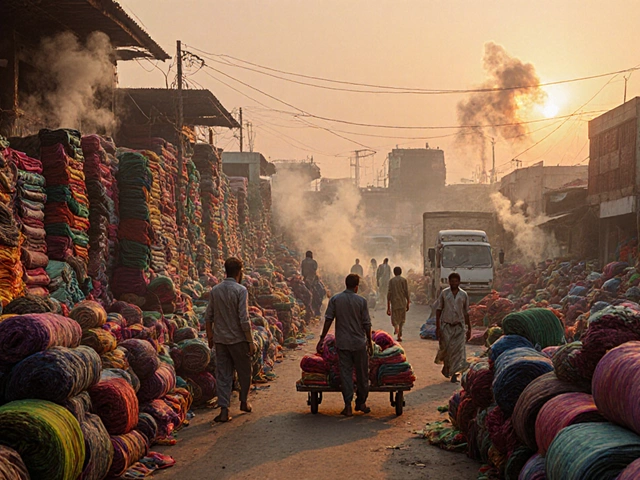India's Rank in Global Textile Production - 2025 Insights

India Textile Production Projection Calculator
Current Production Data
India's textile production in 2024-25: 115 million metric tons
Global rank: 3rd (after China and USA)
Key Takeaways
- India is the 3rd largest producer of textiles worldwide in 2024‑25.
- Annual textile output reached roughly 115million metric tons.
- China leads the market, followed by the United States and then India.
- Government initiatives such as the Scheme for Integrated Textile Parks (SITP) are boosting capacity.
- Exports grew 9% YoY, positioning India as the 5th biggest exporter.
When you hear the phrase "India ", it's easy to think of spices, IT services, or cricket. Yet textile manufacturing is a quiet powerhouse that fuels jobs for over 45million people. Understanding where India stands in the global hierarchy helps investors, policymakers, and students see why the sector matters.
How the Global Textile Landscape Looks
The world’s textile output is measured in million metric tons (MMT) of finished fabric, yarn, and apparel. According to the International Trade Centre’s 2024 report, total production hit about 860MMT. The top five producers are:
| Rank | Country | Production | Share of Global Output |
|---|---|---|---|
| 1 | China | 310 | 36% |
| 2 | United States | 95 | 11% |
| 3 | India | 115 | 13% |
| 4 | Bangladesh | 78 | 9% |
| 5 | Vietnam | 62 | 7% |
India’s 115MMT places it solidly in third place, a spot it first achieved in 2018 and has held ever since. The numbers reflect not just raw cotton output but also synthetic yarn, blended fabrics, and technical textiles.
Drivers Behind India’s Position
Three main forces keep India near the top:
- Abundant raw material base. The country produces over 38million tons of cotton annually, the second‑largest global output after China.
- Labor‑intensive value chain. With an average manufacturing wage of $3.50 per hour, factories can stay competitive on cost.
- Policy support. The Ministry of Textiles launched the Scheme for Integrated Textile Parks (SITP), providing $1.5billion in subsidies for modern machinery and green energy.
These pillars generate a virtuous cycle: higher capacity lowers unit costs, which attracts foreign brands, which in turn pushes firms to adopt automation and improve quality.

Regional Strengths Within India
Textile hubs are not spread evenly. The top six states account for about 70% of output:
- Gujarat - strong technical textile clusters, especially in Ahmedabad.
- TamilNadu - cotton processing and garment manufacturing in Coimbatore.
- Maharashtra - blend of cotton, synthetic, and export‑oriented units in Mumbai and Pune.
- Karnataka - growing synthetic yarn capacity.
- West Bengal - historic jute and modern blended fabrics.
- UttarPradesh - fast‑growing apparel exporters.
Investors looking for site‑specific opportunities should match state‑level incentives with their product focus.
Export Performance and Global Market Share
India shipped 9.2million metric tons of textiles abroad in 2024, a 9% increase from the previous year. The Export Promotion Council of India (Texprocil) attributes the rise to new free‑trade agreements with the EU and the United Kingdom.
Key export segments:
- Readymade garments - 34% of export value.
- Home textiles (bedsheets, towels) - 28%.
- Technical textiles (medical, automotive) - 15% and growing fast.
The export rank sits at 5th globally, behind China, the United States, Bangladesh, and Vietnam. Climbing higher will require boosting high‑value technical textile exports, a niche where India already has R&D talent.
Challenges Keeping India From the Top Spot
Even with a solid third‑place ranking, several hurdles remain:
- Infrastructure gaps. Power outages still affect 12% of small units, raising operating costs.
- Skill shortage. While labor is cheap, a lack of trained technicians slows automation adoption.
- Environmental compliance. The textile sector is the second largest water polluter in the country; stricter wastewater standards could force costly upgrades.
Addressing these pain points is part of the government’s “National Textile Policy 2025” roadmap, which earmarks $4billion for green technologies by 2030.

Future Outlook - 2025to2030
Analysts from the Confederation of Indian Industry (CII) project a compound annual growth rate (CAGR) of 6.4% for total textile production through 2030. If the current trajectory holds, India will surpass 150MMT by 2030, narrowing the gap with China.
Two trends will shape the next five years:
- Digitalization. Cloud‑based ERP and AI‑driven demand forecasting are being piloted in Gujarat’s integrated parks, cutting inventory waste by up to 22%.
- Sustainable fibers. Investments in organic cotton, recycled polyester, and hemp are expected to add 8-10MMT of eco‑friendly output by 2028.
For readers who need a quick reference, the table below summarizes the key metrics you’ll want to track.
| Year | Production (MMT) | Export Share (%) | Growth Rate (%) |
|---|---|---|---|
| 2025 | 118 | 14 | 2.6 |
| 2027 | 130 | 15 | 5.1 |
| 2030 | 155 | 17 | 6.4 |
Practical Takeaways for Different Readers
If you’re an investor: Look for companies that have already secured SITP land and are moving toward automation. Those firms are better positioned to capture the projected CAGR.
If you’re a policy analyst: Track the rollout of the National Textile Policy’s green‑tech grants. Early data will reveal which states are most responsive.
If you’re a job‑seeker: Upskill in textile engineering, CAD design, or environmental compliance to meet the demand for higher‑value roles.
Frequently Asked Questions
What is India’s current rank in global textile production?
India is the third‑largest producer of textiles worldwide, trailing only China and the United States, with an output of about 115million metric tons in 2024‑25.
How does India’s textile export rank compare to its production rank?
India stands at fifth place in textile exports, behind China, the United States, Bangladesh, and Vietnam. The gap reflects a stronger domestic consumption base compared to export‑focused competitors.
Which Indian states contribute most to textile output?
Gujarat, TamilNadu, Maharashtra, Karnataka, West Bengal, and UttarPradesh together generate roughly 70% of the nation’s textile production.
What government schemes support textile growth?
Key programs include the Scheme for Integrated Textile Parks (SITP), the Technology Up‑gradation Fund (TUFS), and the National Textile Policy 2025, which together provide subsidies, credit facilities, and green‑tech incentives.
What challenges could affect India’s future rank?
Infrastructure bottlenecks, skill shortages, and tightening environmental regulations are the main obstacles. Addressing them will be crucial to maintain or improve the current third‑place standing.





